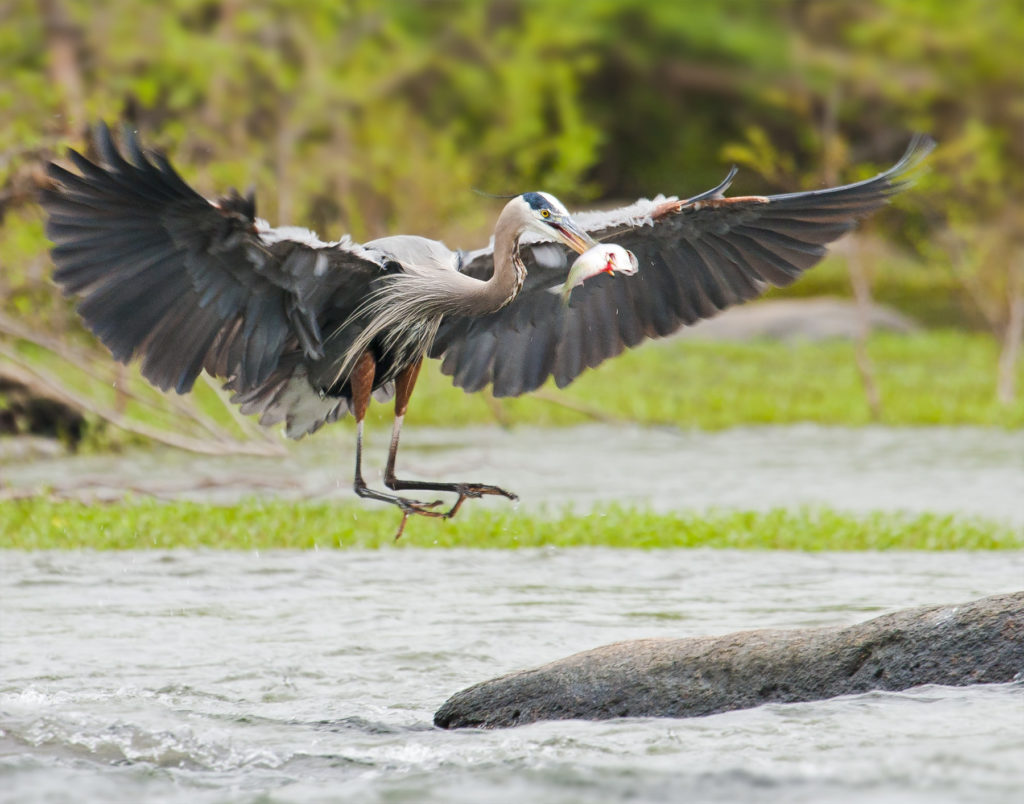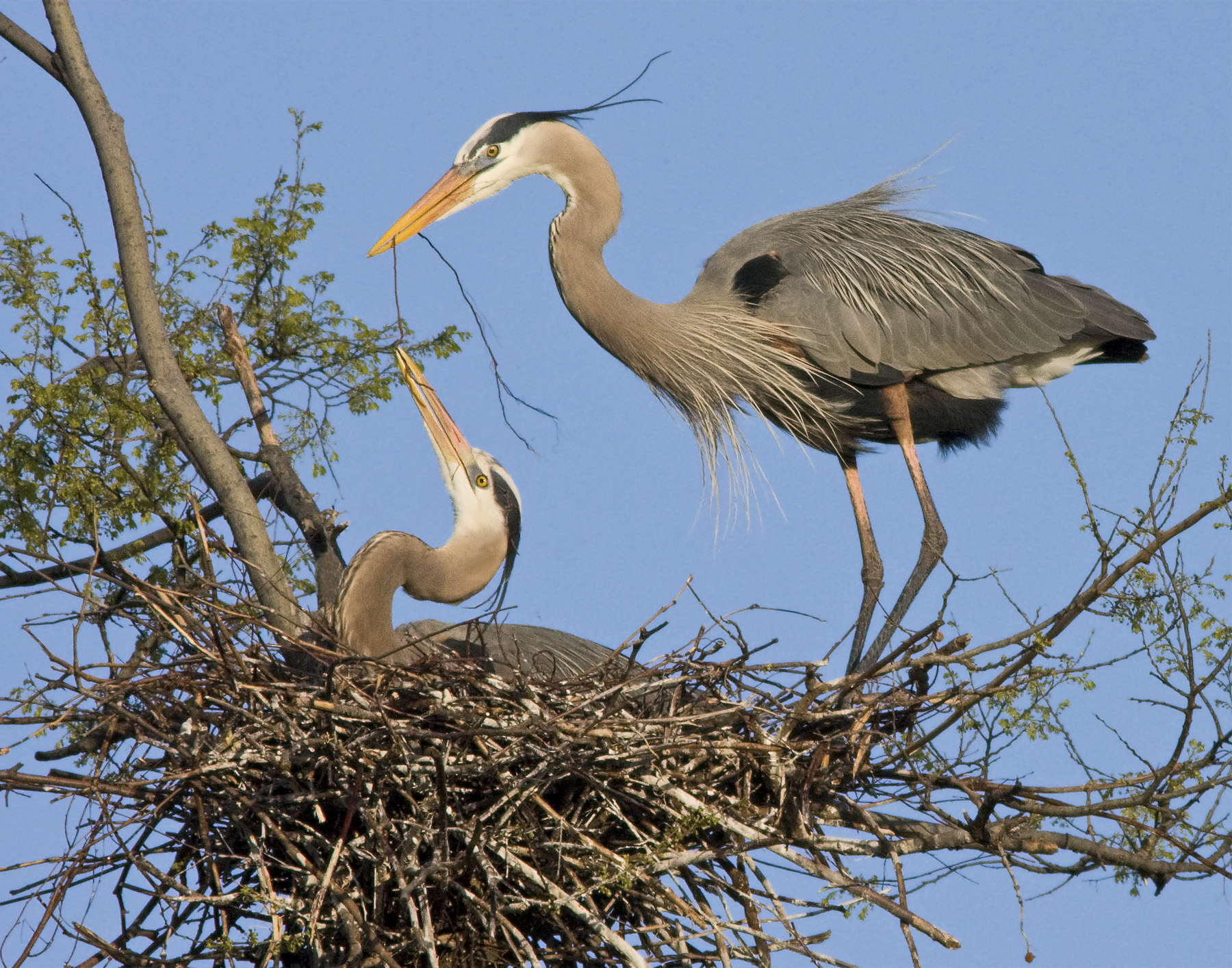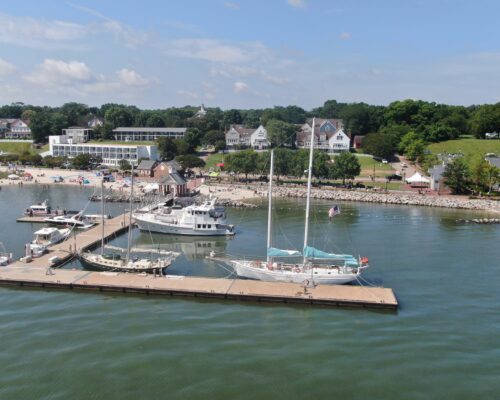Standing on the banks of the historic James River near Virginia’s capital city, you gaze at a great blue heron gracefully perched in its waters. Watching the bird, it seems as if you’re in a secluded, untouched paradise. But the sudden honking, humming planes and chatting people wake you up from this reverie and makes you wonder—how could this elegant creature thrive in such an urban place?
During the late winter and early spring, an influx of majestic birds begins to appear across the Chesapeake Bay watershed. The great blue heron in particular adores this portion of the waterway for its plentiful fish and nesting habitats. As Virginia’s largest Bay tributary, the James River is surrounded by stunning outdoor spaces with opportunities to view herons feeding and nesting, especially during their breeding season beginning in February. It’s during this time you’ll see them performing various courtship behaviors, like neck stretching, circular flight displays and twig exchanges. When the season concludes, they’ll remain heavily active through early summer as they hunt for food to feed their chicks who grow in the nest for about 60 days before flying off.
While you can spot them almost everywhere along the James, one surprising heron-watching location is in downtown Richmond. This urban area is a hotspot for this bird who enjoys nesting in its mature trees or quietly hunting in shallow river streams. Often, as you explore the city, you’ll notice some flying overhead on their way back to their nests, particularly around parks that border the James, like Maymont or Great Shiplock Park.
Bob Schamerhorn, a professional nature photographer, has spent hours observing and capturing the herons on camera. He notes the best area to view them in the city tends to be where the tidal zone meets the James’ last rapid, especially during the spring around mid-April when herring are plentiful. “They most often stand still on the bank or on a perch in the middle of the river waiting for a fish to swim by,” he says.

During his explorations, Schamerhorn has noticed many unique heron behaviors, including their feeding habits. “Once they spear a fish with their sharp pointy beak, they will toss it into the air and catch it with the head facing toward their throat to swallow it,” he says. “This makes it easier to slide down their throat because of the direction of the fish’s scales.”
If you follow the river about half an hour away toward Chester, Virginia, you’ll find a rather bustling rookery in the Dutch Gap Conservation Area. The numerous herons here carefully build their large nests in the rookery—a spot that tends to be in the tops of old deciduous trees. If you listen carefully, you’ll often hear them squawking. A pair of high-tech binoculars might give you an up-close view of the scene, but the best way to view it is by kayaking or canoeing through the park’s tidal lagoon water trail.
While birdwatchers and nature lovers might be the most intrigued, the herons serve as an important reminder to all of the Bay’s exquisite beauty. “These are native creatures whose range covers all of North America and have an array of interesting behaviors and beauty beyond compare,” Schamerhorn notes. “They are witness to mankind’s sloppy treatment of our environment, so seeing one of these magnificent birds is a feast for our eyes and a blessing to our soul.”




